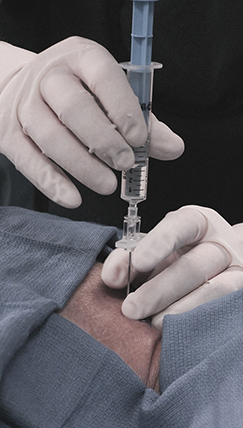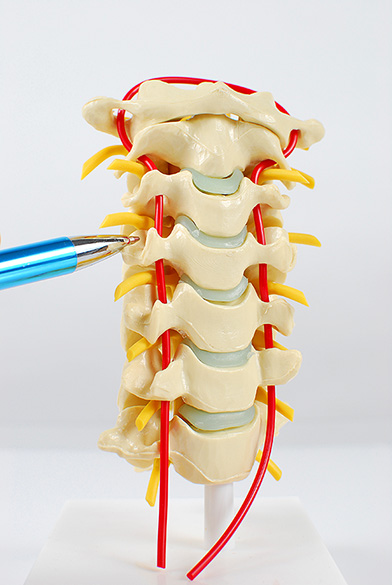Transforaminal Epidural Steroid Injections
An epidural steroid contains corticosteroids that wrap around the nerves and can reduce levels of swelling and inflammation, which are the causes of chronic pain.
Transforaminal Epidural Steroid injections are inserted beside the spine in the epidural root sleeve. They are made up of general anesthetic, saline, and steroids.

How do Transforaminal Epidural Steroid Injections work?
- The patient is usually on their side however in some cases are told to lie on their stomach.
- The patient has the opportunity to ask for sedation.
- EKG, blood pressure, heart rate and oxygen levels are all monitored during this procedure.
- The neck/back is cleaned thoroughly using an antiseptic to eliminate any risk of infection.
- A needle is inserted into the region that is most painful for the patient.
- A physicist will use a fluoroscope to pinpoint the exact root of the pain.
- The injection should take a maximum of 15 minutes – for most people it only takes 5.
- Follow-up assessments will be scheduled to see how the patient is reacting to the medicine.
- It is recommended that the patient only has 3 injections in 6 months – this is because the treatment will last for a long time.
Most people are able to go back to their day-to-day lives the day after surgery as Epidural Steroid Injections lead to fast recovery times.
It has been reported that Transforaminal Epidural Steroid Injections work better for those who experience pain that shoots from their neck down to their back. People who experience pure back or neck pain don’t reap the benefits as much.
Side Effects
Some of the side effects of Transforaminal Epidural Steroid Injections include bleeding and infection. These symptoms are very rare and only occur in a small percentage of the population.
Common side effects include:
- Feeling that your arm/leg is numb
- Feeling that it takes a lot of effort to move your arms/legs
- Increased blood sugar levels (particularly if you suffer from diabetes.)
- Increased blood pressure/ hypertension
- Rashes including red patches on the face/chest.
- Nausea
- Headaches
- Fever
However, these shouldn’t be long lasting and should go within the space of 24 hours. Some patients experience soreness and this is reported to leave after 48 hours.

Who shouldn’t be using Transforaminal Injections?
People who are on medication to control the density of blood should NOT be using this procedure.
People who suffer from severe diabetes should NOT have the injection (if you are taking multiple injections a day then using these injections may not work with your system.)
